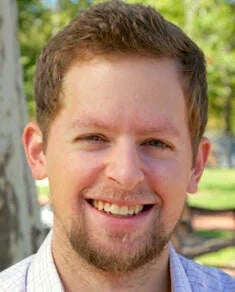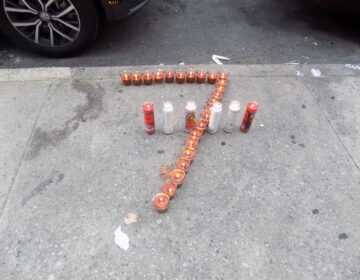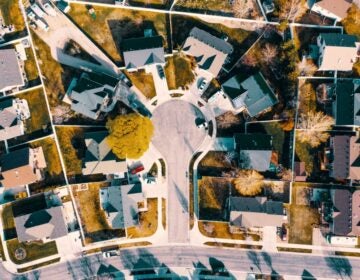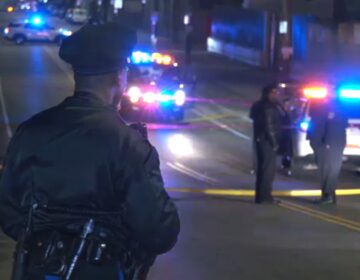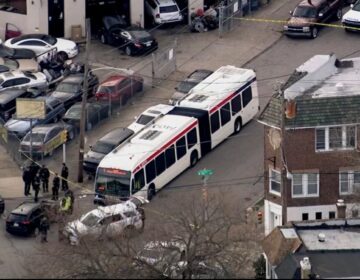When it comes to its gun violence epidemic, Philly is struggling to control the spread
The city has some pieces of a public health strategy in place, but experts and community leaders say it needs to do more to quell gun violence long term.
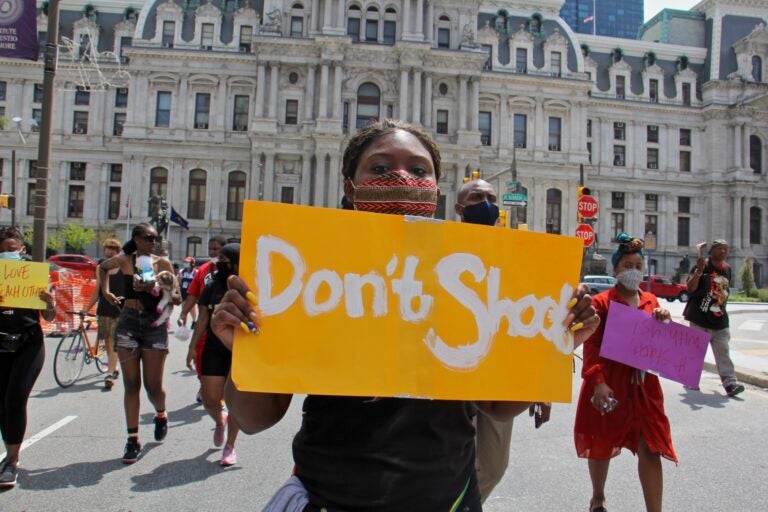
Sarai Ford marches with a group of young people calling for an end to gun violence on July 20, 2020. (Emma Lee/WHYY)
It took a month or two for Dr. Elinore Kaufman to notice that the emergency department at Penn Presbyterian Medical Center was busier than usual.
One of the grimmest signs: She had more shifts in which the hospital’s trauma bay was completely full of people suffering from one or more gunshot wounds.
“It’s always a little hard to tell day to day,” said Kaufman. “But when we see our five main beds in our trauma bay filling up with gunshot wound after gunshot wound, really filling the bay night after night, that kind of brings it home.”
Though overall violent crime is down in the city, shootings and murders have surged over the last five months, forcing residents — especially Black Philadelphians — and frontline medical workers like Kaufman to contend with two deadly epidemics at the same time: COVID-19 and gun violence.
“For me, it’s been busy. For my patients, I think it’s been pretty awful,” Kaufman said. “And for their families and their loved ones and their community, it’s just as sad.”
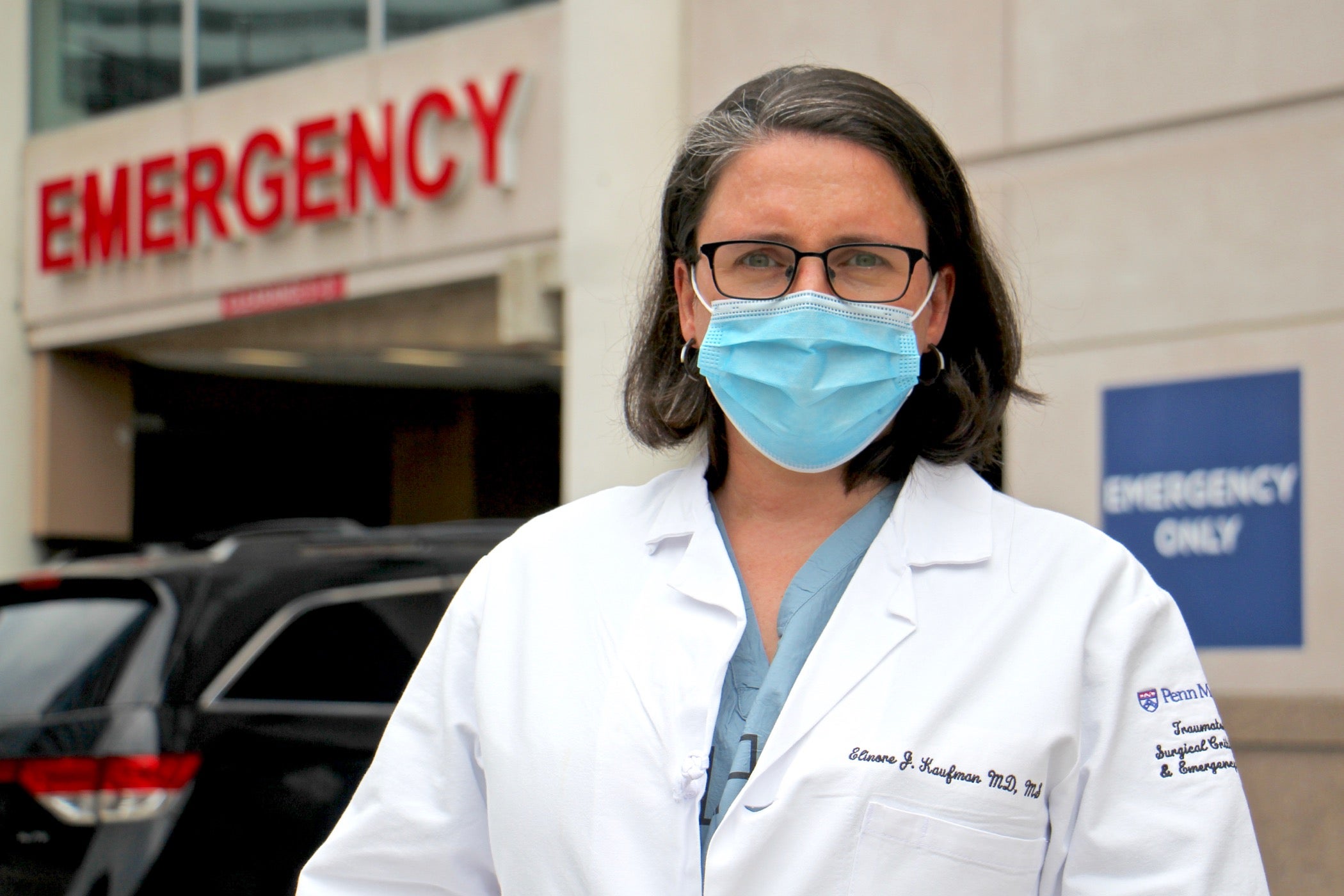
(Emma Lee/WHYY)
To date, the Philadelphia Police Department has recorded 276 homicides — a 31% increase compared to the same time in 2019. It’s been more than a decade since this many people have been murdered at this point in the year.
As of Aug. 16, the last date for which data is available, 1,203 people have been shot in the city — a 36% increase over the same time last year.
Roughly three-quarters of them have been Black men and boys, according to police.
The unexpected uptick in gun violence has also renewed calls for the city to fully embrace and employ a public health approach to reducing the bloodshed — a decades-old strategy focused on violence prevention and crafting data-driven solutions to address the causes of and contributors to the problem.
Philadelphia has some pieces of this strategy in place, but experts and community leaders say it needs even more of them to quell gun violence in the long term.
“Until we realize that this is a public health epidemic and address it that way, we will continue to put Band-Aids on these wounds,” said Dorothy Johnson-Speight, founder of the anti-violence group Mothers In Charge.
A contagious virus
The public health approach is rooted in a simple idea: Addressing gun violence is as complex as treating a contagious virus, like the one that causes COVID-19.
Both can be deadly. Both are unpredictable. And it can be difficult to get individuals to follow the rules necessary for stopping the spread, whether it’s wearing masks and staying 6 feet apart or solving disputes without guns. And even when people do follow those rules, there are greater social factors at work that may defy even the best efforts.
Like the COVID-19 pandemic — which researchers have found is affecting city neighborhoods also hit hard by gun violence at high rates — Philadelphians are desperate for solutions to feel safe again.
“If you think about any other illness, there are multiple symptoms at the same time that define that illness. Therefore, you have many areas you can target for the prevention and treatment of that illness,” said Dr. Joel Fein, who co-directs the Violence Prevention Initiative at Children’s Hospital of Philadelphia.
When it comes to gun violence, prevention and treatment ranges from street-level interventions — sending outreach workers into high-crime areas to de-escalate conflicts in the community before bullets fly — to initiatives crafted to tackle the systemic inequalities behind the violence, including generational poverty.
No single program or policy is designed to be a panacea, nor is any single program or policy meant to completely supersede the role traditional law enforcement plays in crime reduction, Fein said — a tenet that’s taken on new meaning as cities across the country begin examining the role of police in public safety following the killing of George Floyd by police officers in Minneapolis.
“Nobody would say that there isn’t a need for law enforcement,” said Fein. “It’s really working together and trying to add some precision to the process.”
To Dr. Kathleen Reeves, director of the Center for Urban Bioethics at Temple University, the public health approach to gun violence boils down to three distinct, but interconnected phases.
Like efforts to contain COVID-19, the first phase centers on interrupting the spread of gun violence, which some liken to a contagious virus because of the way retaliation between groups of people often leads to more and more shootings.
The cornerstone of the containment phase, said Reeves, is sending people, often called “violence interrupters,” into communities to try to stop the violence before it happens.
“We have to hire people who are credible. We need to support them. And then it needs to be big enough to make a footprint. We need enough workers that it becomes the norm,” she said.
The second phase is akin to controlling new outbreaks by offering people opportunities that reduce the likelihood they will be in situations that may lead to violence.
“Give them opportunities like jobs, education,” she said.
The final and most challenging phase of the public health approach to gun violence is what Reeves calls “vaccination” — establishing a new norm in which shootings and murders are no longer routine parts of life in some neighborhoods and picking up a gun is not a viable option for some people because they have good jobs, stable housing and other life-sustaining opportunities.
Experts say that requires ongoing investments to address the systemic inequalities driving gun violence in Philadelphia, including the city’s need for more affordable housing and an improved public education system.
Reeves said those investments are not being made, keeping the city stuck somewhere in the first two phases of dealing with the epidemic, and trapping residents in a cycle of gun violence that has killed an average of 312 people a year since 2007.
“We are still in the middle of the epidemic with violence,” she said. “We are still completely at the intervene and move the highest risk people away from this [violence].”
A plan with some promise
In 2019, a year that ended with 356 murders, the Kenney administration released a five-year plan with the goal of helping the city break that impasse.
Touted as a public health strategy, “The Philadelphia Roadmap to Safer Communities” is guided by an ambitious vision statement: that “every Philadelphian will be safe from gun violence in their communities, with full access to opportunities to create their path to a fulfilling life.”
The plan calls for increasing graduation rates and reducing truancy; creating job opportunities for at-risk youth and young adults; having a public health infrastructure focused on violence prevention; and reducing structural violence in high-risk neighborhoods.
The strategy also seeks to improve “environmental factors” by doing things like greening more vacant lots and enforcing property violations in neighborhoods at high risk for violence, as well as rehabbing recreational facilities in those areas.
“By letting the data lead our efforts, working with community stakeholders and understanding the pain that causes hurt people to hurt people, we can better allocate evidence-based violence prevention resources, and social services for those at a high risk of violence,” said mayoral spokesperson Kelly Cofrancisco.
During the first year of the effort, the city hired more crisis workers for its violence interruption programs, awarded nearly $2 million to community groups fighting gun violence, and referred nearly 900 residents to “educational options,” including adults and students who previously dropped out of high school, according to a quarterly update released in January.
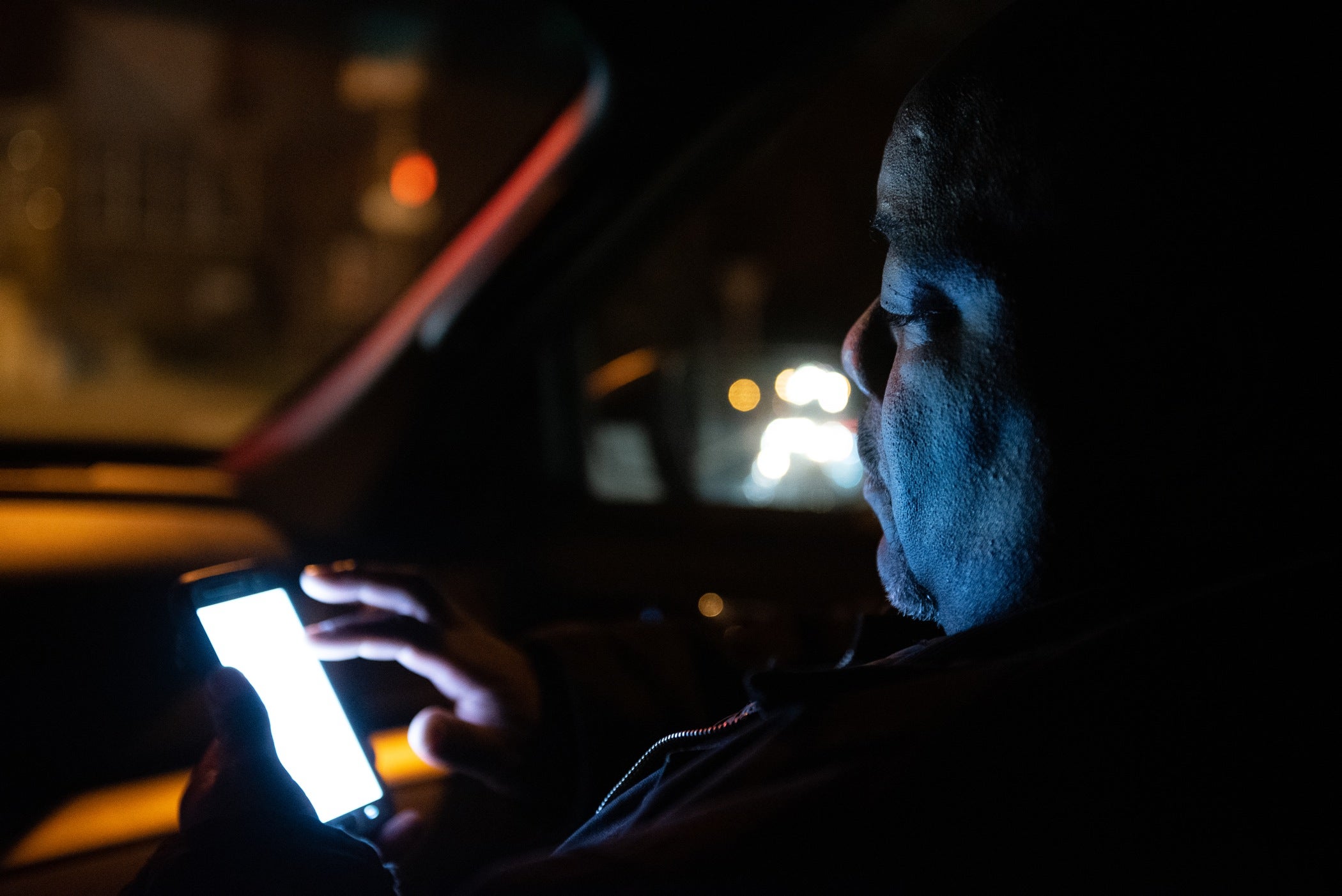
This year, the city is slated to launch a new Firearm Homicide and Non-fatal Injury Review Team, which will be tasked with studying shootings and gun-related homicides “in order to identify possible strategies for future interventions.”
The Community Life Improvement Program and the Department of Licenses and Inspections were both slated to hire more staff to clean up more vacant lots and remediate blight, but the funding was cut as a result of the economic fallout caused by COVID-19. It’s unclear if that funding will be restored, said Cofrancisco.
Public health researchers who study gun violence say the mayor’s plan has promise, but will hit a dead end if it’s not properly funded.
Facing a $749 million budget hole, the city made cuts to several departments, including the Managing Director’s Office, which oversees many of the anti-violence programs.
The office’s budget last fiscal year was more than $11 million; it has been cut to $9.8 million this year.
Roughly half of that total will go toward violence interruption work, which public health proponents say must be a critical component of any plan to reduce shootings.
In comparison, Philadelphia spent an estimated $115.8 million responding to the COVID-19 pandemic between March 1 and June 30, according to a mayoral spokesperson.
‘You have to reach a lot of people’
The quality of the data the city relies on is also critical to the success of its gun violence prevention plan, said Dr. Therese Richmond, who leads the Firearm and Injury Center at the University of Pennsylvania.
“At the local level, the more real-time we can have data, the more actionable it is,” she said.
In the same way robust testing helps health officials track the spread of the coronavirus, good crime data helps show whether outreach workers are having an impact on gun violence.
“You can’t really monitor if you don’t have the data,” said Dr. John Rich, co-director of the Center for Nonviolence and Social Justice at Drexel University.
The city agrees, though it recently came under fire during a City Council hearing for being unable to provide lawmakers with specific figures about the outcomes of its anti-violence programs and details on whether those efforts are actually reducing shootings in the communities where they operate.
At one point in the hearing, City Councilmember Curtis Jones asked for the number of at-risk residents the city has helped. Theron Pride, who leads the city’s Office of Violence Prevention, didn’t have an answer.
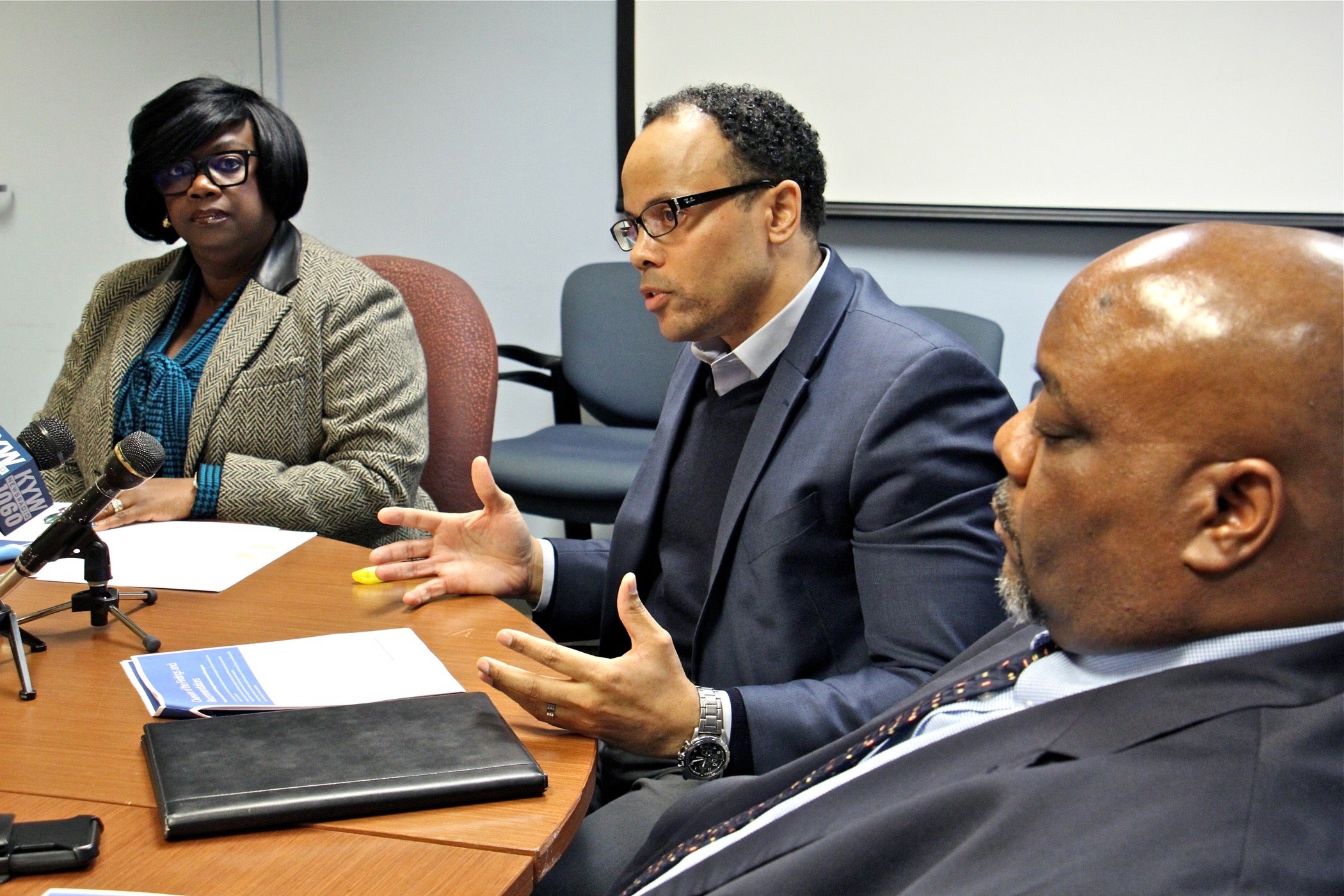
In 2018, the Office of Violence Prevention launched the Community Crisis Intervention Program, which operates in partnership with the nonprofit Philadelphia Anti-Drug/Anti Violence Network, or PAAN.
Seven days a week, outreach workers visit high-crime sections of North, Northeast, South and Southwest Philadelphia.
They respond after a shooting in hopes of stopping those involved from retaliating with more violence. But they also spend a lot of time just talking to people — to keep their fingers on the pulse of the neighborhood so they have a sense of what may be brewing that could lead to more gunshots.
“You never know for sure who the next perpetrator will be, and so you have to reach a lot of people if you hope to have a significant impact from a prevention perspective,” said executive director George Mosee.
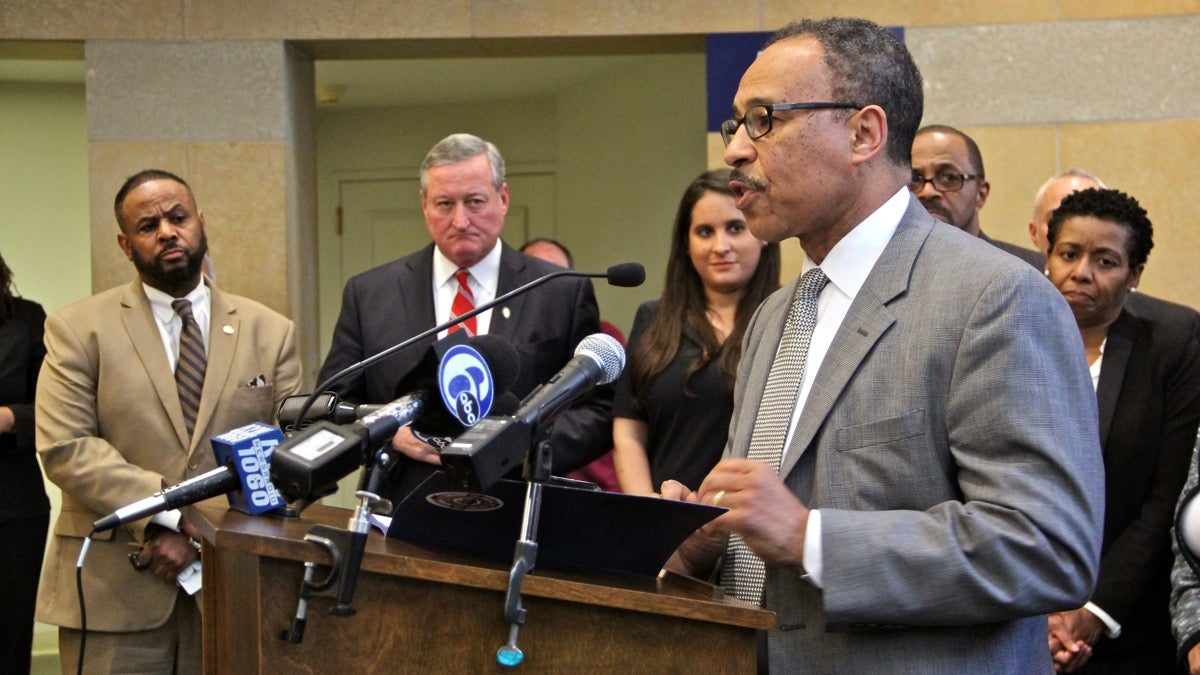
During one week in July, outreach workers responded to nine shootings and stabbings and spoke with 566 residents, according to PAAN.
The program will soon have 67 staffers. It started with nine.
Public health proponents like Rich say the city could benefit from having a well-funded “army” of outreach workers in neighborhoods across Philadelphia.
Pride doesn’t disagree, but he said only data will drive decisions to scale up the program.
“Right now, we’re holding with this notion that as we get up to this 67, we should be able to have a sizable impact on this alongside all the things that we’re doing within our violence prevention plan,” said Pride. He added that it’s challenging to find people who are a good fit for the job, who are often called “credible messengers” because they know firsthand the dynamics of the gangs and other groups perpetuating the violence.
“You really need to have people who have been able to exit the life and are not going to be pulled in,” he said. “You wanna make sure that they can still do this and function in a healthy capacity.”
‘This is not at the pace that we wanted it’
Launched at the start of August in Southwest Philadelphia, the Group Violence Intervention program is grounded in a long-standing fact about gun violence here: A small number of the city’s residents are responsible for the shootings — less than half of 1%.
The hope is that targeting some of those individuals — identified with the help of police — will translate to fewer people being rushed to emergency rooms with gunshot wounds.
“We want to see an impact within the first year of implementation,” said Pride.
The program involves getting “gang or group-involved individuals” to sit down for small group discussions with police, probation officers and community leaders. Roughly 30 at-risk residents will be part of those conversations.
The goal of the conversations is twofold.
“Let them know that the shooting must stop, but there’s also a genuine offer of help,” said Pride, adding that participants will be encouraged to deliver that message to members of their informal networks.
The program — an effort Reeves, the doctor at Temple University, would consider a strategy for interrupting the spread of gun violence and containing new outbreaks — hinges on a combination of carrots and sticks.
Outreach workers offer participants — most of whom are on parole or probation — social services, job training and mental health services, but also threaten collective enforcement if the violence doesn’t stop.
Traditionally, that has meant group members are responsible for one another’s actions. If the shootings continue, everyone suffers consequences.
Focused Deterrence, a similar initiative rolled out in South Philadelphia in 2013, threatened participants with incarceration or higher bail, as well as cracking down on utility theft and unpaid fines, among other things.
In response to critics of that program, which fizzled out shortly after a two-year pilot, GVI is designed to offer more robust incentives to help people choose another path.
The annual budget for the Focused Deterrence pilot was never more than $150,000. The city has allocated roughly five times that amount for GVI for the current fiscal year.
Stakeholder meetings have started, but the program is still ramping up, in part because of the coronavirus pandemic, according to the city. The Office of Violence Prevention is still in the process of hiring a case manager and an independent evaluator. An advisory committee and a plan to offer transitional jobs to participants are also still in the works.
“This is not at the pace that we wanted it. We’re doing what we can to adjust,” said Pride.
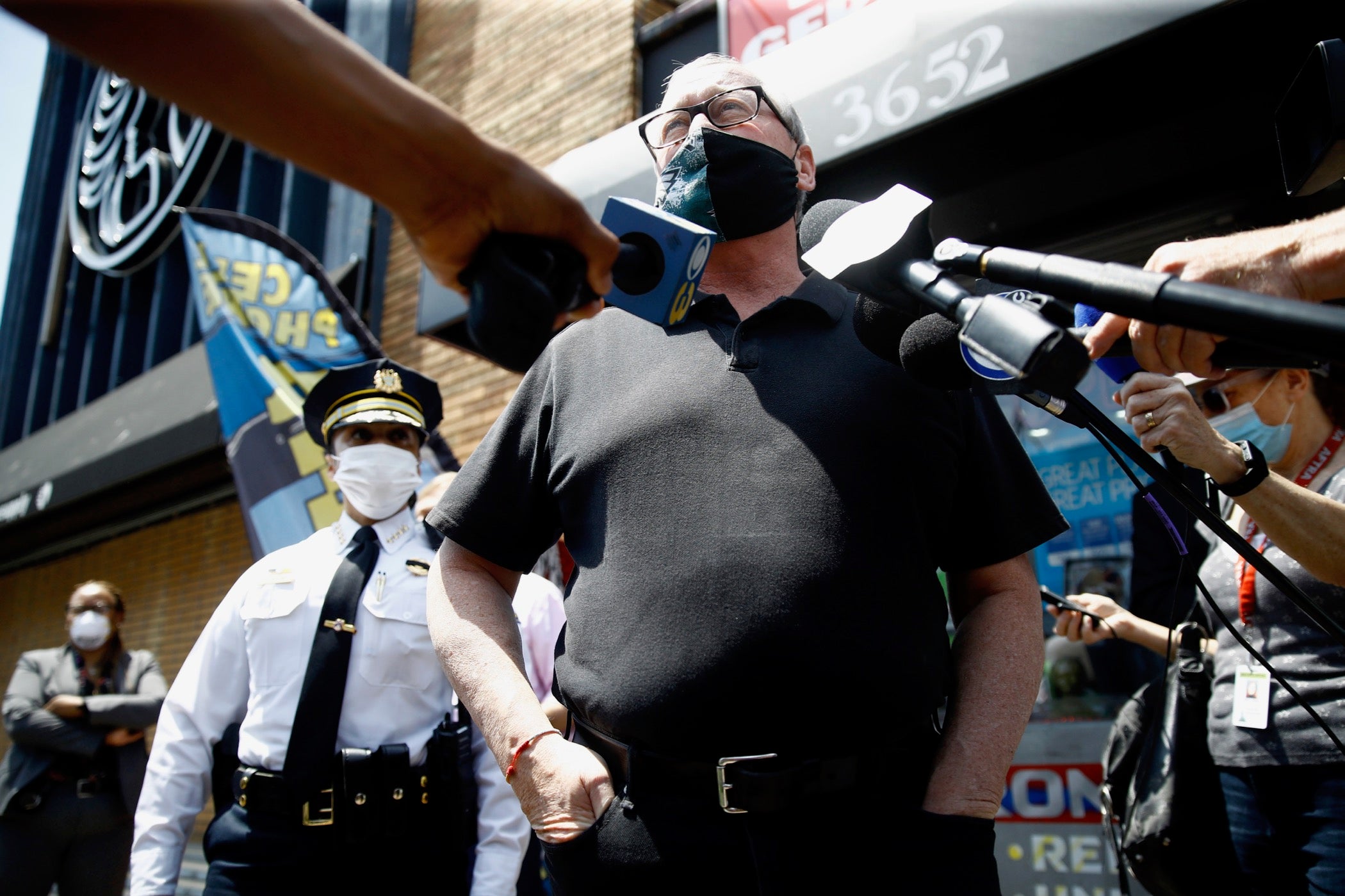
‘The voices have to change’
Amid ongoing protests following the police killing of George Floyd in Minneapolis, cities across the country are taking a closer look at the role of law enforcement in public safety and how much funding should be directed to police departments as opposed to other efforts to give communities better access to jobs, housing, health care and education.
In Philadelphia, lawmakers have introduced police reform measures. And civil rights activists, including Rev. Gregory Holston, are renewing calls for the city’s police force to undergo a complete culture change.
Holston, who works for the Philadelphia District Attorney’s Office, said all of it strengthens the possibility of realizing long-awaited change in the city, including a stronger commitment to public health solutions to gun violence.
Residents, he said, are more engaged than ever, which helps create the kind of political pressure necessary to make that happen.
“I know this conversation will go further, it will go on and it will move to something in the right direction — maybe not this year, maybe not next year. But it will happen because the movement for change is building in our city,” said Holston.
Longtime anti-violence activist Bilal Quayyum is cautiously optimistic for the same reason. But also because he’s seeing a more diverse group of people pushing for things to be done differently, including young white residents.
If that people power is combined with concrete efforts to improve police-community relations, Quayuum thinks the status quo has the potential to change.
“The voices have to change to have a different direction, and they are changing,” said Quayyum.
If Quayyum and Holston are right, public health proponents in Philadelphia say the city could see a noticeable decrease in gun violence over time.
“I don’t think my job would disappear overnight, but I certainly think it would get easier,” said Kaufman, the Penn Presbyterian trauma doctor. “I would hope to see fewer nights where we’re filling up our trauma bay with gunshot wound victim after gunshot wound victim.”

Get daily updates from WHYY News!
WHYY is your source for fact-based, in-depth journalism and information. As a nonprofit organization, we rely on financial support from readers like you. Please give today.


